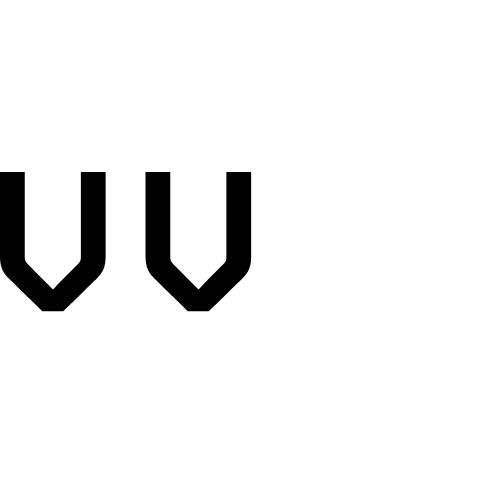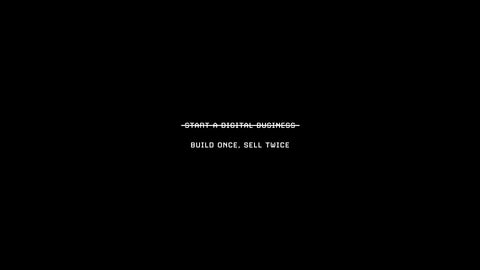SEO writing is the process of designing, optimizing, and structuring content so that it ranks in search engines like Google, Yahoo, and Bing.
The following screenshot shows Visualize Value's trailing 12-month impression count in Google Search Console.

We started introducing SEO content writing tactics into our content creation process in August 2022.
Since then, we have seen a 4,000% increase in visibility within Google's search engine (and growing).
This dramatic shift in our SEO performance is down to the fact that we have started to use SEO copywriting tactics to design our new search content.
Here we run through those exact tactics so that you can start to design your own winning SEO writing strategies.
What is SEO writing?
SEO writing is the process of designing content to rank in search engines.
More specifically, on the first page of Google.
Why?
It's estimated that roughly 70% of people who make a search on Google and other search engines click through to one of the first three organic search listings.
And a huge 35-40% click-through to the top organic search position in Google.
That means websites that can rank well in Google, stand to drive a huge amount of organic traffic that can be used to drive action (and revenue).
What does good look like?
Effective SEO copywriting involves razor-sharp keyword research, an appreciation for search intent, creating content relevance with the use of contextual keywords, and structuring content with on-page SEO best practices.
While writing for SEO can seem like a daunting process, mastering the skills you need to write effective search copy can exponentially increase your chances of attracting thousands of visitors every single month (or day) from search engines.
Here's a snapshot of one single page on the Visualize Value blog, designed using SEO copywriting tactics.

This page is seen 20,000x per day in Google's search engine and ranks on thousands of individual high-value keywords.
It's the definition of a compounding content asset, that works 24 hours a day, 365 days per year.
And the beauty of it.
You require zero permission to create this content asset.
Armed with the tactics required to rank content in search engines, it's possible to drive future ranking success with a mix of dedication, patience, and consistency.
Why is it important to master SEO content writing?
Mastering SEO content writing is an important factor for any online business.
Whether you operate locally, or target global audiences, creating content that ranks in search engines can help you drive high-intending traffic to your website that ultimately drives revenue.
And don't just take our word for it.
Every day, Google handles 3.8 million searches per minute, 228 million searches per hour, and 5.6 billion searches per day.
That provides anyone with an internet connection with the unique ability to drive free traffic from search engines.
Let's take a look at an example like CNET.com, a high-authority content site in the technology niche.
CNET's website ranks on over 20 million individual keywords, driving an estimated 40 million visitors per month organically from Google search.

It would cost CNET an estimated $28.6m per month to drive the equivalent traffic via paid channels.
And the best bit, they convert this traffic using affiliate links, and by selling advertising packages to drive exponentially more value than this estimation.
Here at Visualize Value, we have spent a huge chunk of time, resources, and energy building social media audiences.
This has been an incredibly rewarding process, but staying in touch with the shifting landscapes at Twitter and Meta is a constant challenge.
While we're not saying Google make it too much easier, by designing content for search engines using SEO writing tactics, we can start to shift our traffic mix by driving a higher proportion of monthly traffic from organic search.

The outcome is more predictability in how we are driving and monetizing traffic via the Visualize Value website.
In addition, opening up new revenue streams and exposing the Visualize Value brand to a wider audience.
10+ SEO content writing tips for high search rankings
Whether you are looking to become an SEO copywriter, or you are simply interested in adopting SEO writing tactics for your business, these SEO writing tactics will set you on the right track.
Introduce these 10 SEO copywriting tactics into your content generation process, and you will see an immediate uplift in your search engine rankings.
Want to dive deeper, check out our dedicated SEO content writing course, Compound Content - rated 5-star by thousands of active students.
Write for people first
First and foremost, create content for people before you think about creating content for search engines.
Google recently released its 'creating helpful content' guidelines, which helps content creators ask the right questions about the content that they are creating.
The aim of these guidelines is to ensure content creators are designing SEO copy that helps the people it is designed to serve.
In order to comply with these guidelines and ensure that you are writing for people rather than search engines, ask yourself these initial questions.
- Does my content serve and help a specific audience?
- Does my content show first-hand experience within the niche I'm looking to serve?
- After reading my content, would the reader feel more informed about the topic?
- Will the reader feel satisfied by my content?
If you can confidently answer yes to these questions, then you are likely in an excellent position to start ranking content in search engines.
Yes, you need to ensure that you are using search engine optimization tactics when structuring your content, but first and foremost, you will be creating value for your audience.
Which is ultimately the name of the game.
Keyword research
Keyword research is the process of researching which keywords people in your industry are searching for relative to your business, products, and services.
Ultimately, keyword research is about understanding what people care about, in advance of designing the content you plan to create.
For example, if you were to search for this article, you'd likely type something in Google like 'SEO writing', 'SEO content writing, or 'writing for SEO'.
By understanding this behavior upfront, we can ensure that we design our content with an appreciation for these target keywords.
There are some excellent tools out there like Semrush and AHREFs that allow you to complete thorough keyword research in advance of creating SEO content.
Here is a snapshot of the search demand for the target keyword 'SEO writing' in AHREFs.

As you can see, every month thousands of people search for this specific keyword.
There are also hundreds of term match keywords, question queries, and related keywords that people also search for looking for the same information.
By understanding upfront which keywords people are searching for, we can include the right keywords in our title tags, page copy, and meta descriptions to ensure that we are set up for success.
The result...
Our SEO copy starts to rank for these target keywords, which means we drive new users onto our website that are directly interested in SEO copywriting, a niche that Visualize Value serve as a business.
Failing to appreciate this search demand upfront would likely result in us creating valuable content that fails to help people or drive traffic.
Run competitor analysis
Similar to keyword research, competitor analysis is the process of evaluating how those you compete with our optimizing their content to drive traffic from organic search.
This type of competitive analysis is a great way to identify keyword ideas in your industry, as you can actively see which target keywords and pages are performing best for your competition.
What's more, you can analyze these pages in greater detail to see what they do with that traffic, and how they use it to make recurring revenue.
Tools like Semrush and AHREFs are excellent resources for completing SEO competitor analysis.
Taking the example of CNET, here we can analyze the top pages report in AHREFs to understand which of CNET's pages drive the most value from organic search.

As you can see, CNET's page on 'home security systems' ranks on over 7.7k organic keywords, and drives an equivalent $2.4m worth of traffic every month.
We can also see that CNET's page on 'home security cameras' and 'purple mattresses' are incredibly valuable for their businesses - driving (a lot of) traffic from organic search.
Taking this a step further, Semrush and AHREFs allow you to drill down and analyze which keywords are driving the majority of traffic for the top organic pages identified.

Using this tactic, we can scan our top competitors to understand which content on their websites drives the most value for their businesses.
This gives us the ability to prioritize our own content-generation efforts, and better understand how to shape our content marketing to generate success.
Competitor analysis is an extension of the keyword research process and a valuable precursor for designing winning SEO content marketing strategies.
Identify search intent
Another important step in designing excellent content for SEO is to write with an appreciation for search intent.
Search intent reflects the intent that the user has when searching for a specific keyword.
Failing to appreciate this search intent in advance of creating content for SEO will more than likely lead to sub-par results when it comes to long-term search rankings.
There are broadly 4 different types of search intent; transactional intent, commercial intent, informational intent, and navigational intent.
Here are some quick-fire definitions.
- Transactional intent - the searcher is looking to make a purchase
- Commercial intent - the searcher is still making up their mind relative to a purchasing decision
- Informational intent - the searcher is looking for information
- Navigational intent - the searcher is looking for a specific place on the internet
When a user makes a search, Google will display results based on what they perceive the searcher's intent to be.
Take the search term 'Lego blocks'.
Here you can see that Google perceives this search term as a transactional intent keyword. As such, they display retail sites stocking 'Lego blocks' in their search results.

If you were to design content that provides information on lego blocks or a comparison of the best lego blocks (commercial investigation intent) then the likelihood of that content ranking for this term would be very slim.
Always check upfront what type of content is ranking on the keywords that you are targeting, and design content accordingly.
Utilize SEO content writing tools
SEO content writing tools like SurferSEO are designed to help you design SEO-optimized content that ranks in search engines.
In fact, all of the content we launch on Visualize Value has been optimized using SurferSEO.
Unlike years gone by where you could get away with keyword stuffing, Google's algorithms have become a lot more sophisticated.
Using natural language processing Google is capable of understanding human language and the semantic relationship between words.
In fact, Google uses an NLP model called BERT (standing for Bidirectional Encoder Representations from Transformers) which is a neural network capable of learning the forms of expression in human language over time.
BERT is now rolled out in over 70 languages and understands the full context of a word, as well as the words that come before and after that word, and the relationship between them.
These developments mean that it's important to write rich, high-quality, and contextually relevant content that broadly meets search demand.
In order to support this process, SEO content writing tools like SurferSEO have designed algorithms that scan the search engine results page and return insights on the content that is already ranking.
This includes existing content structure, use of contextually relevant keywords, title tag structure, as well as word count, number of headings, paragraphs, and images.
Here's a snapshot of this article being produced in SurferSEO.

Rather than guessing, SurferSEO guides us on the best keywords to use in our content, as well as guiding us on word count, content structure, and use of imagery.
As we produce SEO copy, our content is scored using a quality score to show us how we're stacking up.
Structure your SEO content with sub-headings
Sub-headings are a great way to structure your SEO content.
Just like reading a book, organized into chapters, sub-headings help to break up content into bite-sized chunks, which answer specific questions relating to different search terms.
For example, if someone was looking for content relating to SEO writing, they might be interested in the definition of SEO writing, or maybe they are interested in becoming an SEO copywriter, sub-headings give you the chance to create one piece of content which answers all of these questions in isolation.
SEO content writing tools like Surfer also provide valuable insight on the number of headings, and paragraphs that you should include in your content and blog post, as well as ideas on the terms you should include in your headings and title tags to stand a better chance of increased search rankings.
Aim to create sub-headings that build on your page title by drawing the user deeper into the content you're producing.
And follow these best practices:
- Main sub-headings should be marked as H2 tags
- Headings that sit within these content blocks should be marked as H3-H6 tags
- Heading tags should be concise, optimized using keywords you are looking to target and should range between 50-60 characters in length
As a quick example, the H2 for this area of content is the 10+ tips on writing SEO content, the H3 tag is the title that shows you how to structure your content using sub-headings.
Don't make it more complicated than it needs to be.
Create long-form content
In order to stand the best chance of ranking your content in search engines, you need to meet search demand adequately.
And in the majority of cases, that means creating highly valuable, long-form content, and avoiding thin content which does not adequately answer the searcher's query.
Thin content is defined as content that provides little to no value to a searcher in relation to their search query.
For example, if you were looking for content that shows you how to optimize your blog post for SEO, and you land on a page with 100 words, it's very unlikely that you would leave that piece of content feeling informed on the subject matter.
By using SEO content writing tools like SurferSEO, you can understand the word count on pages that are already ranking for that target keyword.
This will give you some guidance on what word count you should target in order to effectively meet a user's search demand when designing your own SEO copy.
Ultimately though, think first about creating valuable content that answers the questions outlined in Google's helpful content guidelines.
If your content meets these guidelines, there is a good chance that the word count will take care of itself.
Optimize on-page SEO elements (title tag and meta description)
On-page SEO elements include page titles (title tags) and meta descriptions, two important tools that you can use to both indicate to search engines what your content is about, and to effectively pull users onto your website.
The title tag is the title of your content and the primary SEO elements that a user will see when your page is displayed on Google's search engine results page.
Here you can see the title tag of our page that reviews the best link tracking software tools.

Effective page titles should be clear and concise, as well as enticing and unique.
They should sit between 50 and 60 characters in length to ensure that they are fully visible when seen in the SERPs, and should aim to attract users to your website without keyword stuffing.
Page titles should also include the primary keywords that you are targeting. In this case, 'link tracking software'.
It's no surprise that the title of this article includes the term 'SEO writing'. That's because we want to appear for this search term, and create familiarity when someone views our listing in relation to making this search (we identified earlier that over 1k people per month search for this exact term).
Similarly, the meta description gives you the ability to describe your content and explain to potential visitors why your content is worth clicking on.
Here you can see the meta description for our 5-star SEO content writing course, Compound Content.

Like the page title, the meta description should be informative, and enticing, and include reference to the keywords that you are targeting.
Meta descriptions should sit between 120 - 156 characters in length to avoid being cut off in the SERPs.
It's also recommended that you use a call to action within your meta descriptions to increase click through rate.
This means using action-based phrasing like 'discover' 'click' and 'find out more'.
Avoid duplicate content
Another important factor when designing content for SEO is to avoid duplicate content.
One of the biggest problems that duplicate content creates is confusion amongst search engines as to which content should rank for specific keyword groups.
For example, if you created the following two pages with similar content (even if that content was exceptional) then you are likely to run into duplicate content issues.
- 10 SEO content writing tips
- 5 ways to optimize your blog post for search engines
While these two pages could represent value for users, they would likely cover very similar topic areas, meaning Google and other search engines would need to make a call on which page is more relevant to show for a specific keyword (Google does not want to show both).
This can lead to a situation where you receive sub-par rankings due to internal pages competing with each other. This could lead to high-quality content failing to rank and drive traffic, wasting your time, energy, and resources.
We'd recommend using tools like Semrush and Grammarly to check for duplicate content to avoid running into this problem.
On top of this, it goes without saying that you should never copy content directly from other website and display it as your own.
In order to rank content effectively you need to create rich, unique content that meets Google's helpful content guidelines.
Track Google's algorithm changes
Google makes regular updates to their algorithm in order to improve the quality of their search engine listings.
In fact, there can be anywhere between 500-600 algorithm updates every year.
Some updates are deemed core updates, others are non-core updates that tweak the way that Google evaluates what they deem quality content.
For example, Google recently launched the helpful content update.
This update saw Google start to score user satisfaction in relation to content quality as a ranking signal.
That means if your website scores well in terms of user satisfaction, this will positively impact your search rankings.
It's not always clear how you optimize for Google algorithm updates but as long as you stay on top of Google's guidelines, and act in your own best interests, algorithm updates should be your friend.
When it comes to creating SEO content, we'd always recommend reading Google's helpful content fundamentals, in order to ensure that you are creating content that is seen as valuable in Google's eyes.
This means writing for people, writing from a position of expertise, creating accurate, informative content that is not sensational in style, and presenting content that is grammatically correct and well structured.
Build links to your SEO content
Building backlinks can be somewhat out of your control as an SEO copywriter, but nonetheless, it's essential if you want to improve rankings.
Backlinks (or links from another website to your website or content) are seen by Google as a vote of confidence in the content you are putting out.
In fact, alongside content quality, the number and quality of backlinks pointing to your website and content is still seen as the top ranking factor by SEO experts - driving site and page authority.
Semrush and AHREFs are great resources for auditing your backlinks, and spotting backlink opportunities across your industry and competitive set.
Here is a snapshot of the Visualize Value backlink profile.

Broadly, you should aim to drive Follow backlinks with low toxicity (meaning that the link is of high quality). And if you want to drive rankings for specific pages, it's a great idea to build as many links as possible to those pages directly.
What now, how do I take SEO content writing to the next level?
Here at Visualize Value we have a range of courses designed for digital entrepreneurs and subject experts.
Compound Content is out 5-star rated SEO course which focuses on SEO content writing and the process for ranking content on page 1 of search engines.
We dive into a lot more detail on the processes touched on in this article, and provide you with all the tools and tactics you need to succeed as an SEO writing expert.
Check out Compound Content if you are an aspiring SEO expert or content writer looking to take your knowledge of SEO to the next level.
Related reviews of other SEO tools and courses









